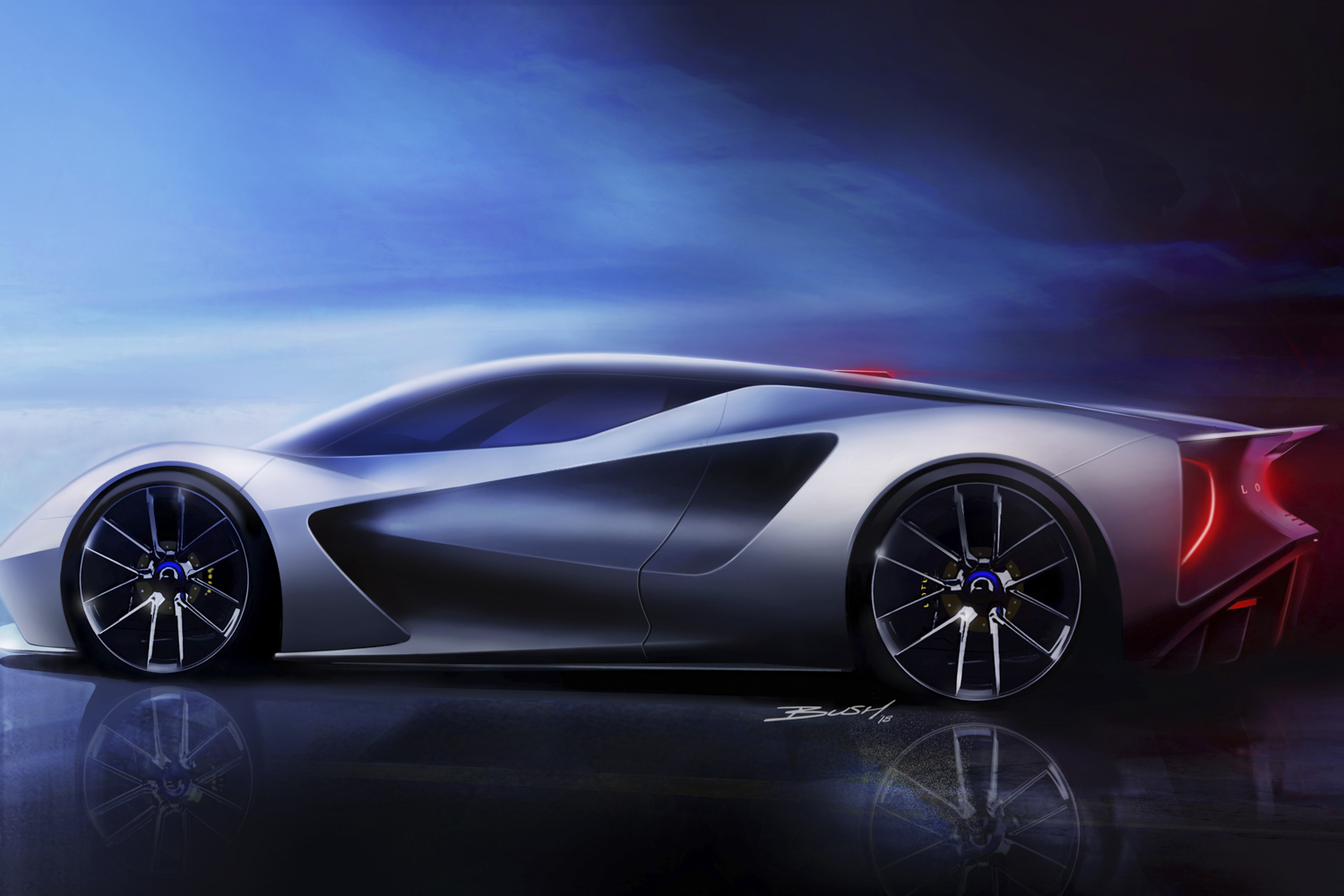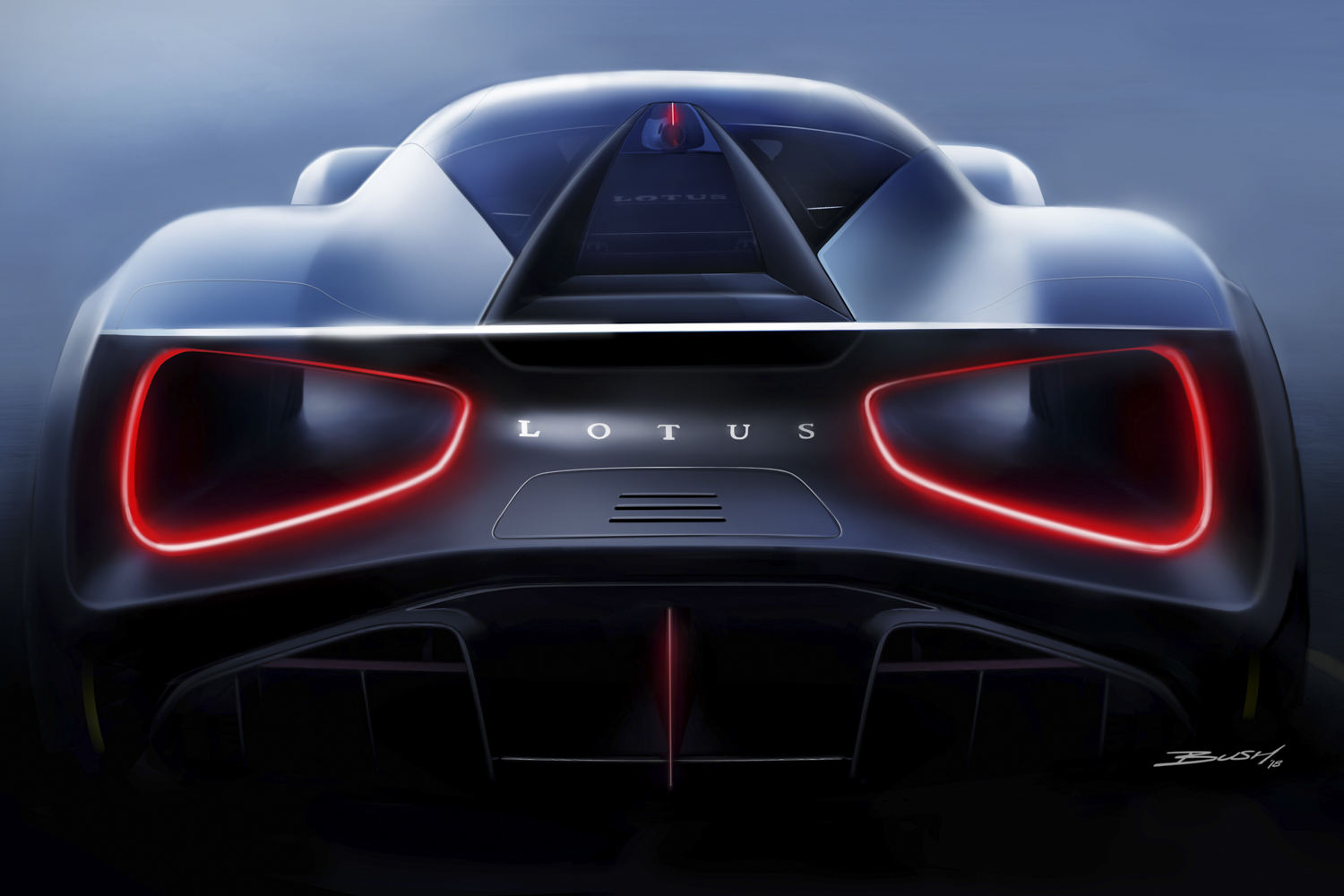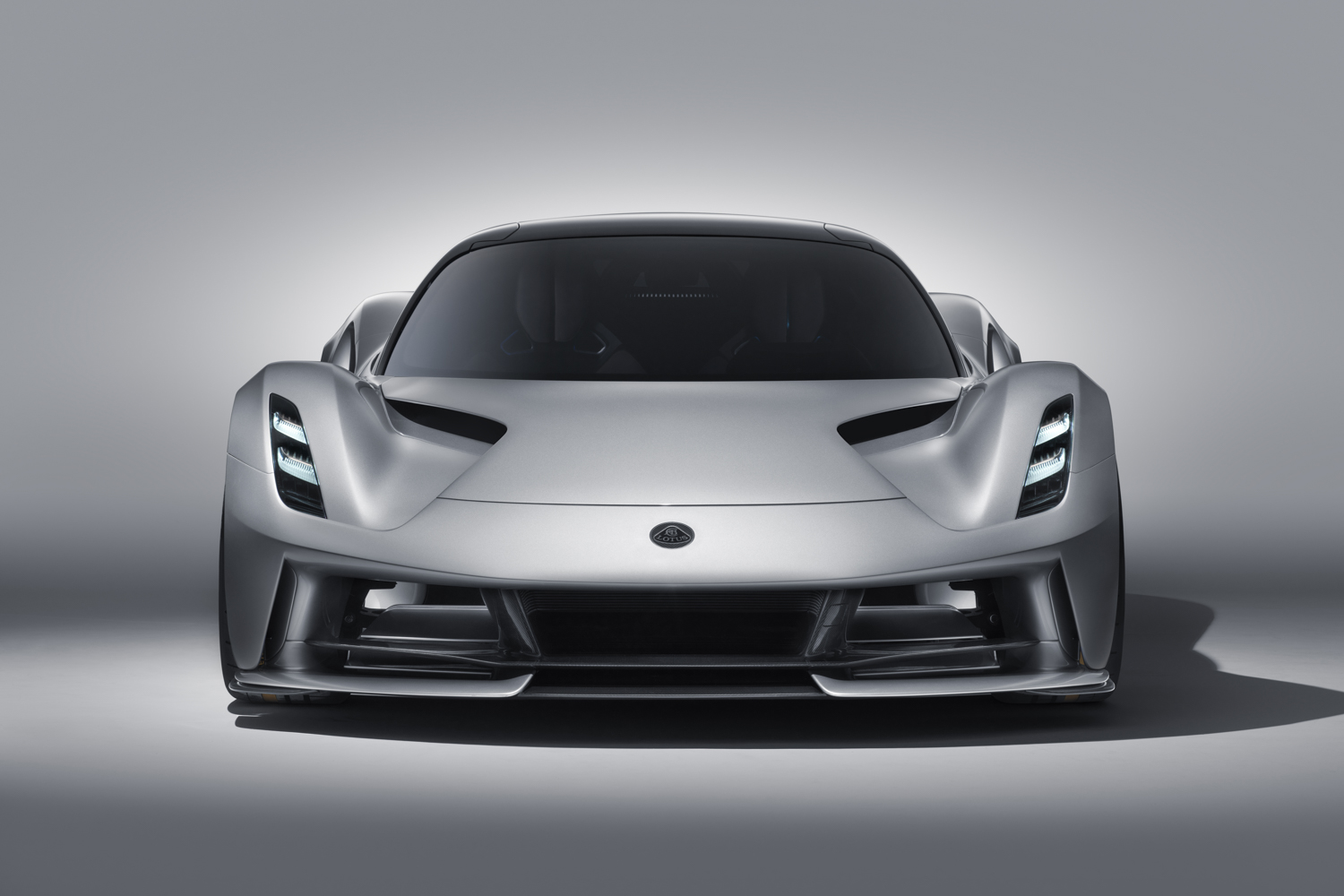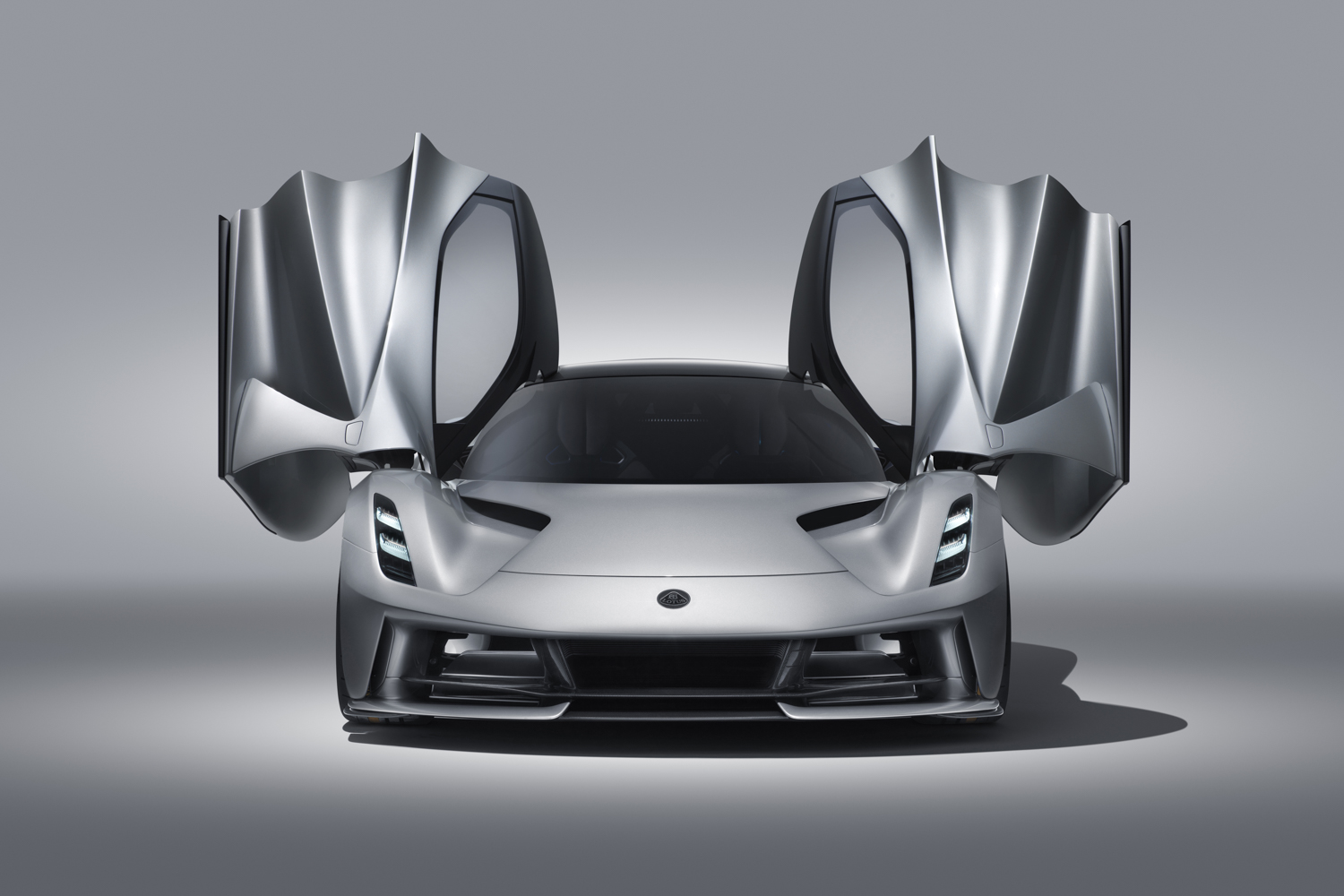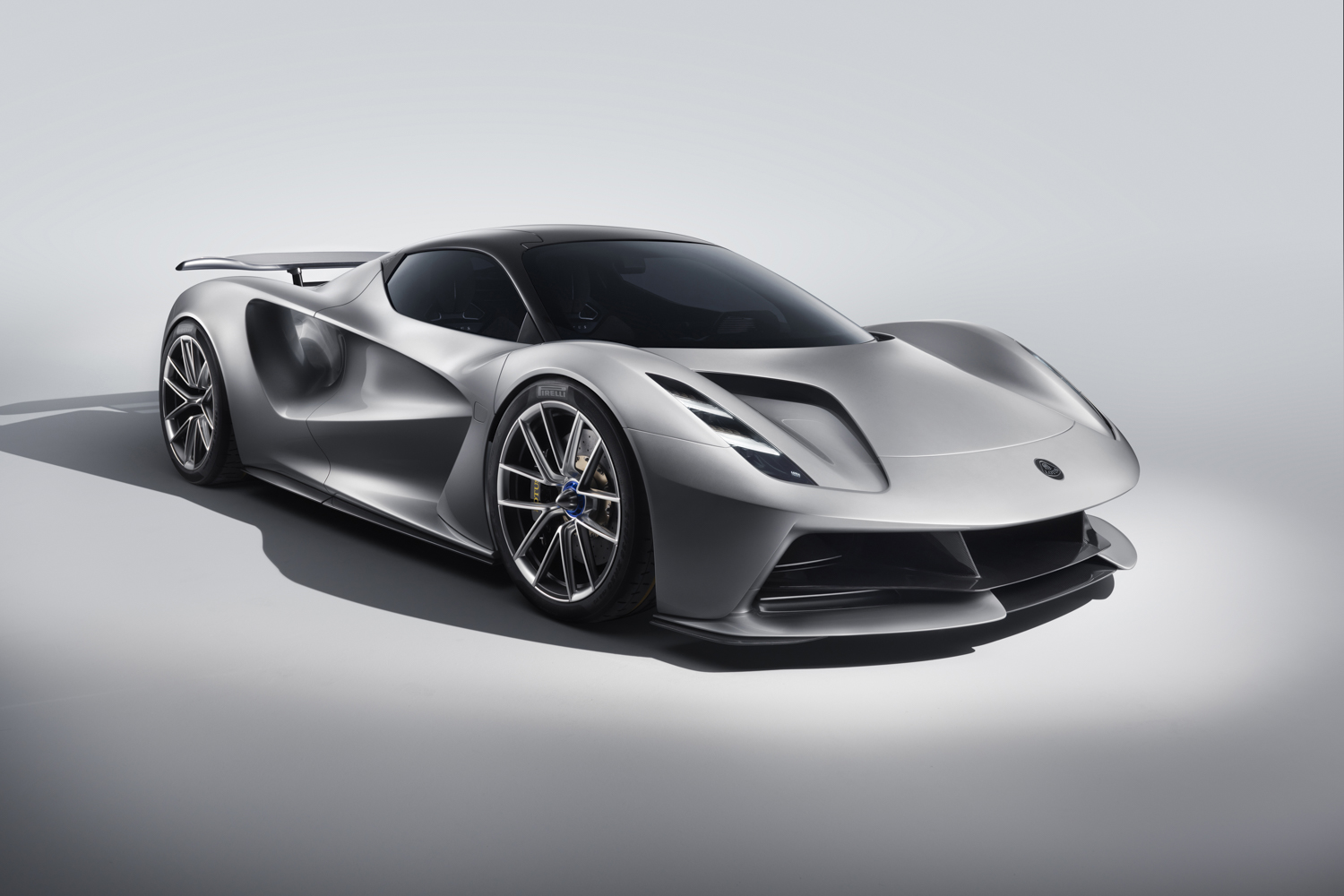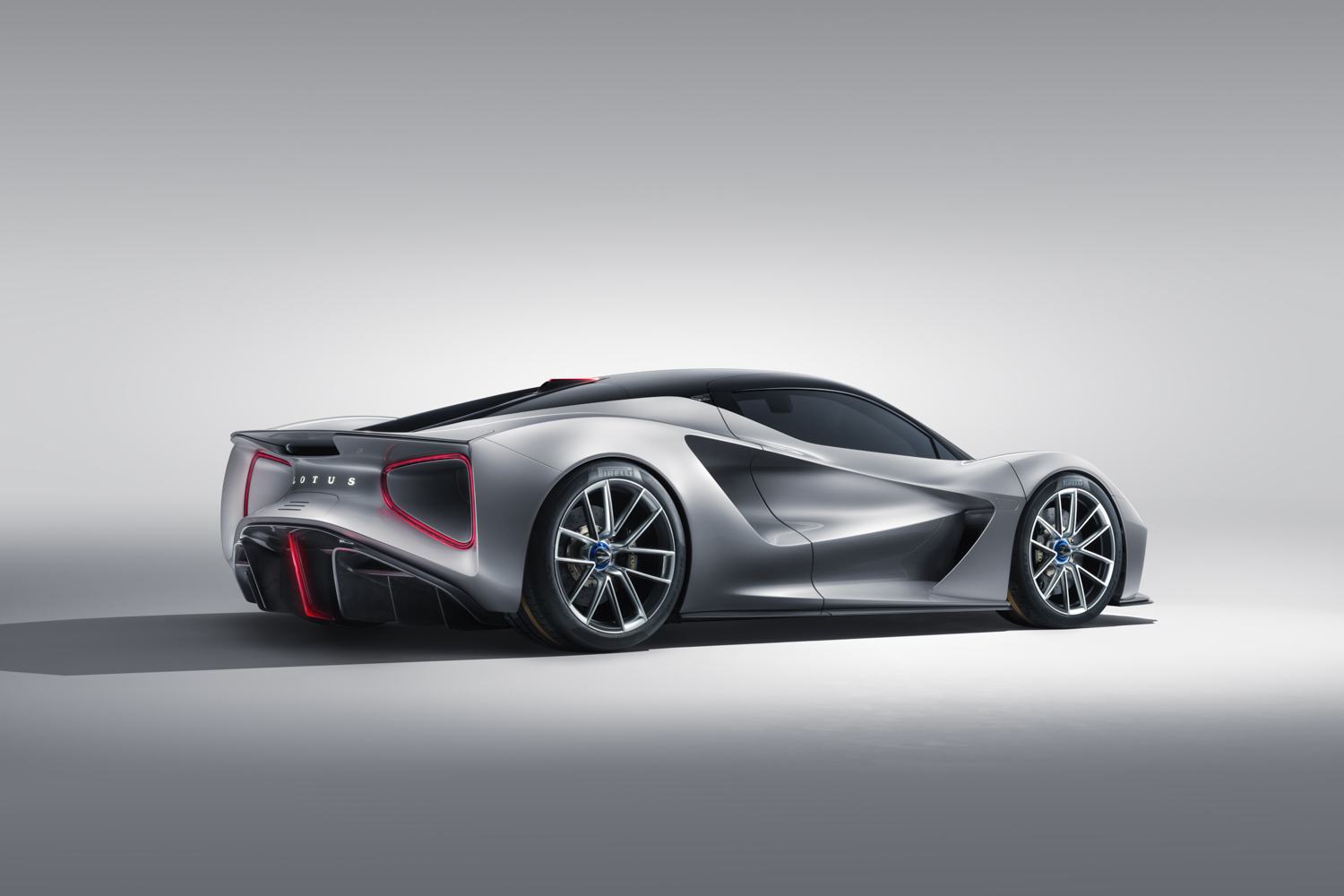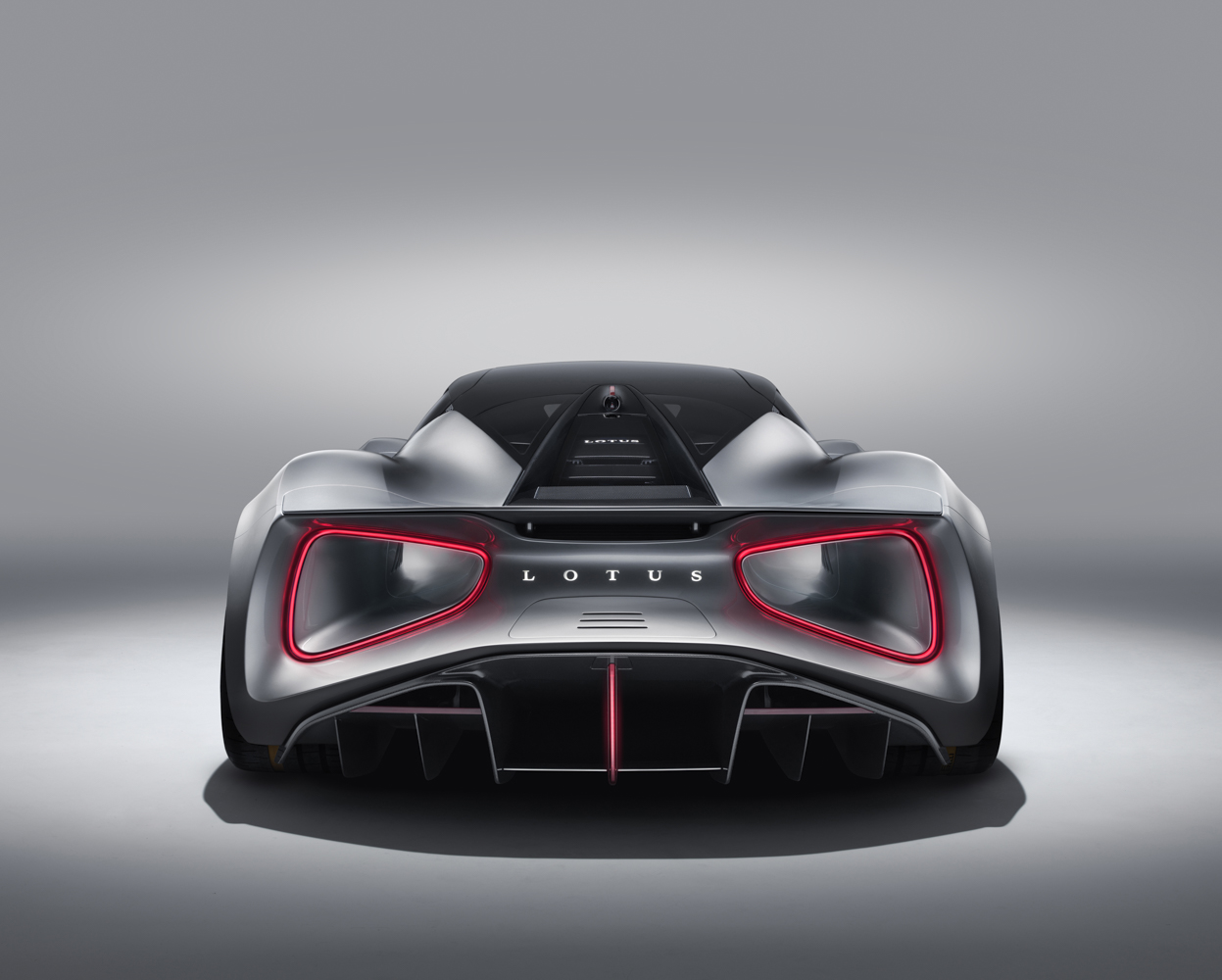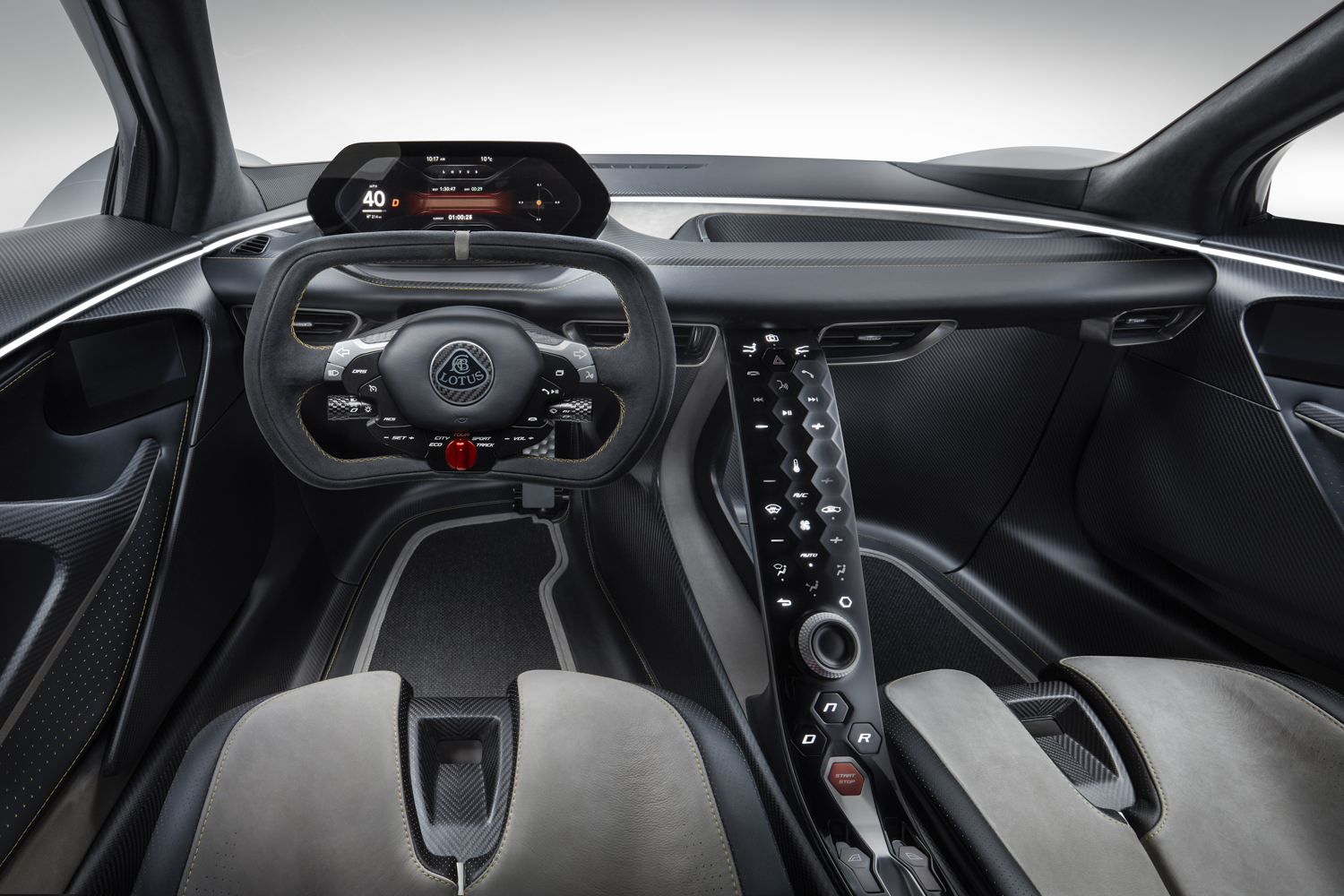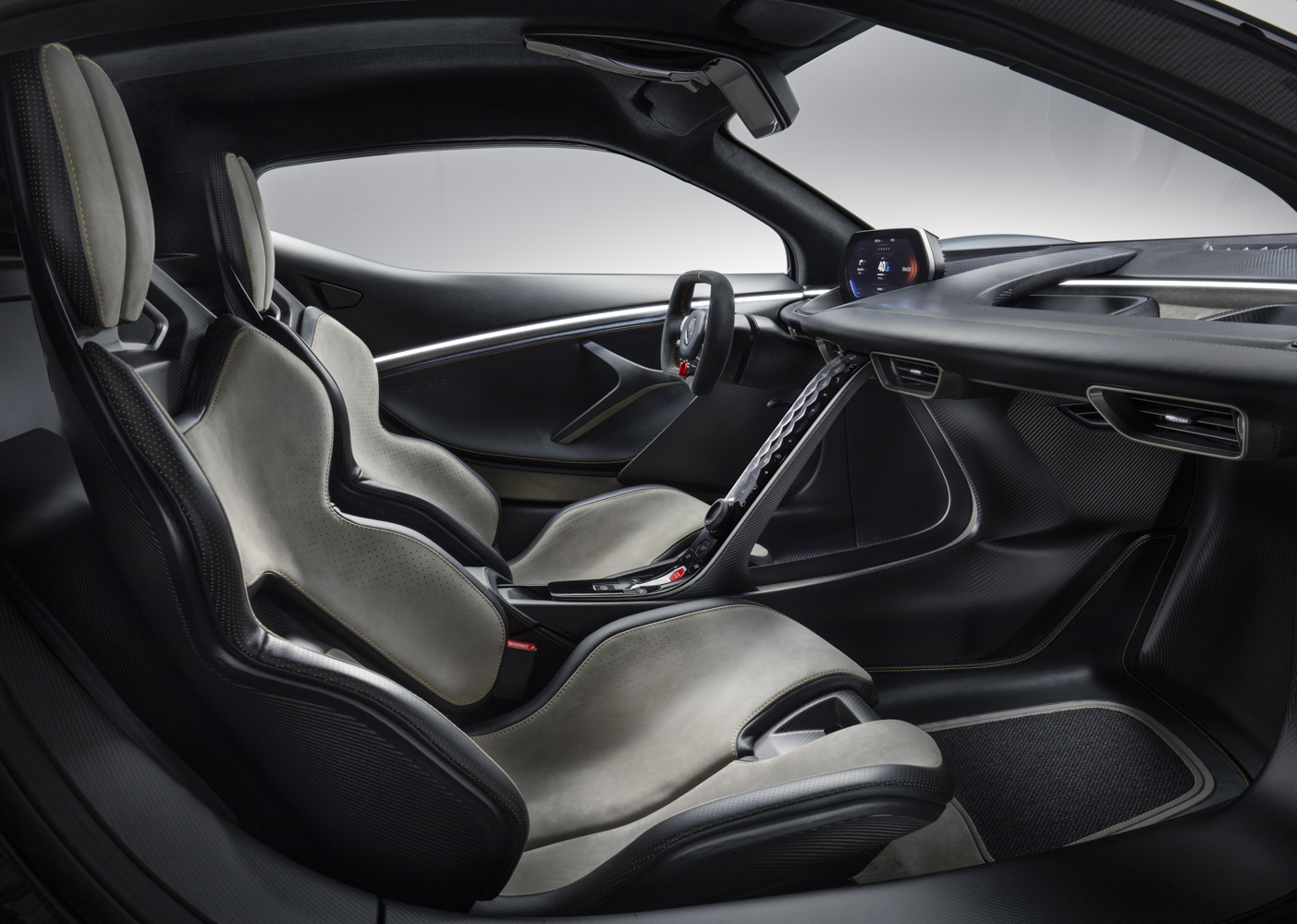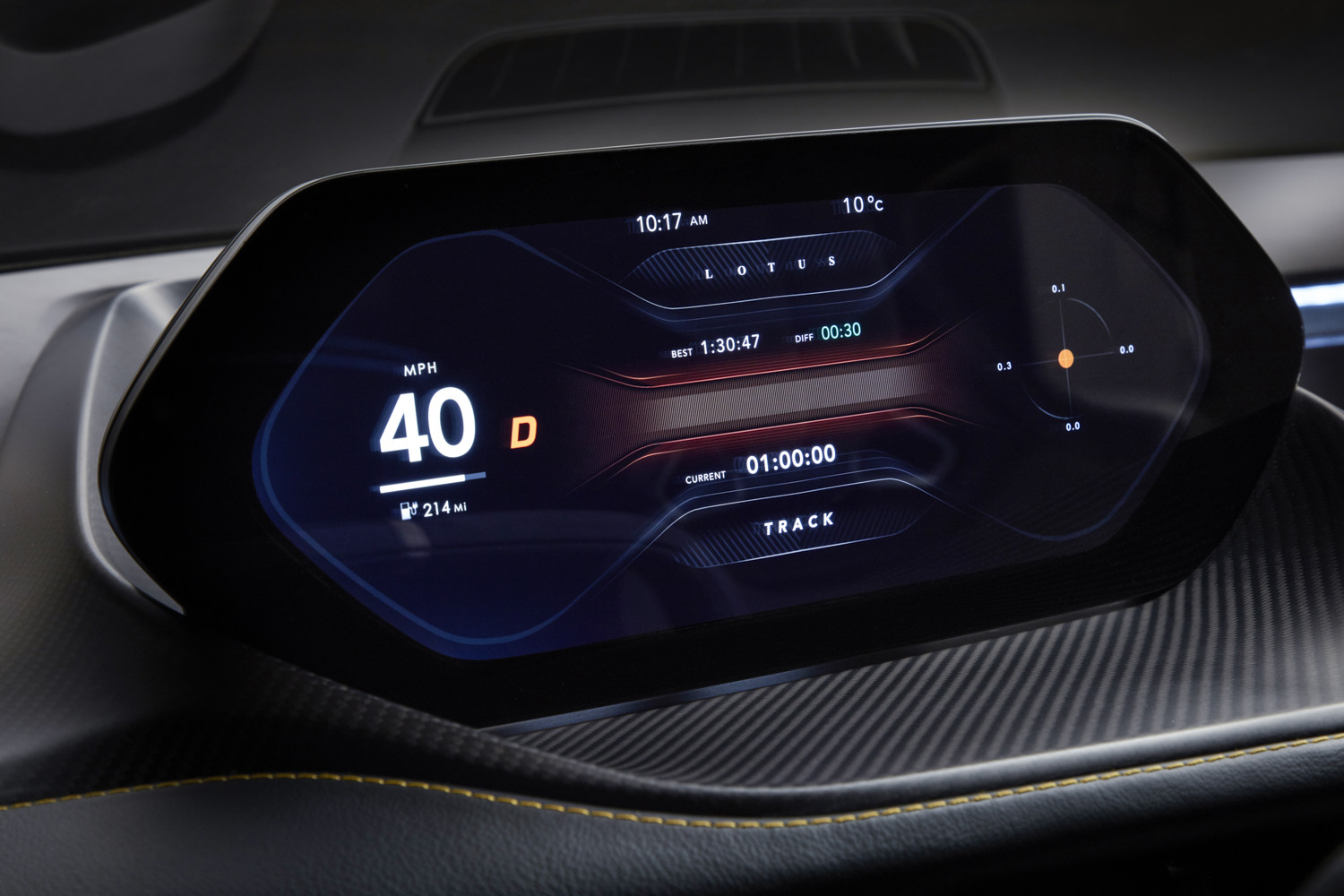For decades, despite its legendary history, Lotus seemed one failed model away from fading into obscurity. That it hadn’t released a new car in more than a decade only seemed to be further proof. Evidently, the company was cleverly biding its time, waiting for the right moment to strike. This month, the British automaker dropped a bombshell on the automotive world in the form of an all-new, all-electric hypercar monster.
Let’s not bury the lede: The Lotus Evija (pronounced “EVE-eye-ah”) will be the most powerful production car ever built. It won’t just be the most powerful electric car, but the most powerful production car, period. On paper, the numbers are absurd. The one worth paying attention to, however, is 1,972 horsepower (that’s 2,000 metric horsepower). To put that into perspective, consider that the Bugatti Chiron launches from 0 to 186 miles per hour in just 13.6 seconds. The new Evija needs only 8.6 seconds — a full five seconds faster.
Its track-worthy numbers are thanks in large part to a 284-pound, Modena-built carbon fiber monocoque. The featherweight design helps bring the car’s total weight down to a paltry 3,704 pounds (1,680 kilograms), making it the lightest electric hypercar in the world. In addition, Lotus placed the 2,000-kW lithium-ion battery directly behind the passenger compartment for better weight distribution. Coupled with four electric motors that control each wheel independently, it has the potential for plenty of dynamic, torque-vectoring fun. A handful of driving modes — from Eco to Tour to Track — allow drivers to edit 20 different parameters to suit their motoring style.
The evolution of mainstream automobiles away from fossil fuels has been a slow burn (pun intended). In their efforts to best one another with faster, stronger, better cars, the world’s best automakers are proving what’s possible in an all-electric vehicle. In two short decades, we’ve gone well beyond the “state of the art” Prius. Today’s best electric cars offer long ranges and rapid charging times, and are legitimately fun to drive. The Lotus Evija is no different, with a 270-mile range and a full recharge in less than 20 minutes on a 350-kW charging station.

Lotus expects to deliver the first Evija models in late 2020. With a $2.1-million price tag and only 130 slated to be built, it promises to be one of the world’s most exclusive hypercars.
If you need a backup plan when the Evija sells out, there’s always Koenigsegg’s equally absurd Jesko, a world-class hypercar with 300-mile-per-hour potential.
Editors' Recommendations
- These are the 5 fastest electric cars in the world right now
- Fisker Announces Rugged, All-Electric Ocean Force-E SUV
- Laffite’s Supercharged X-Road Is a 720-Horsepower All-Terrain Supercar
- World’s First All-Electric, Eco-Friendly Motorhome Could Debut in 2022
- Rivian Debuts All-Electric R1T Pickup With Supercar-Shaming Features
